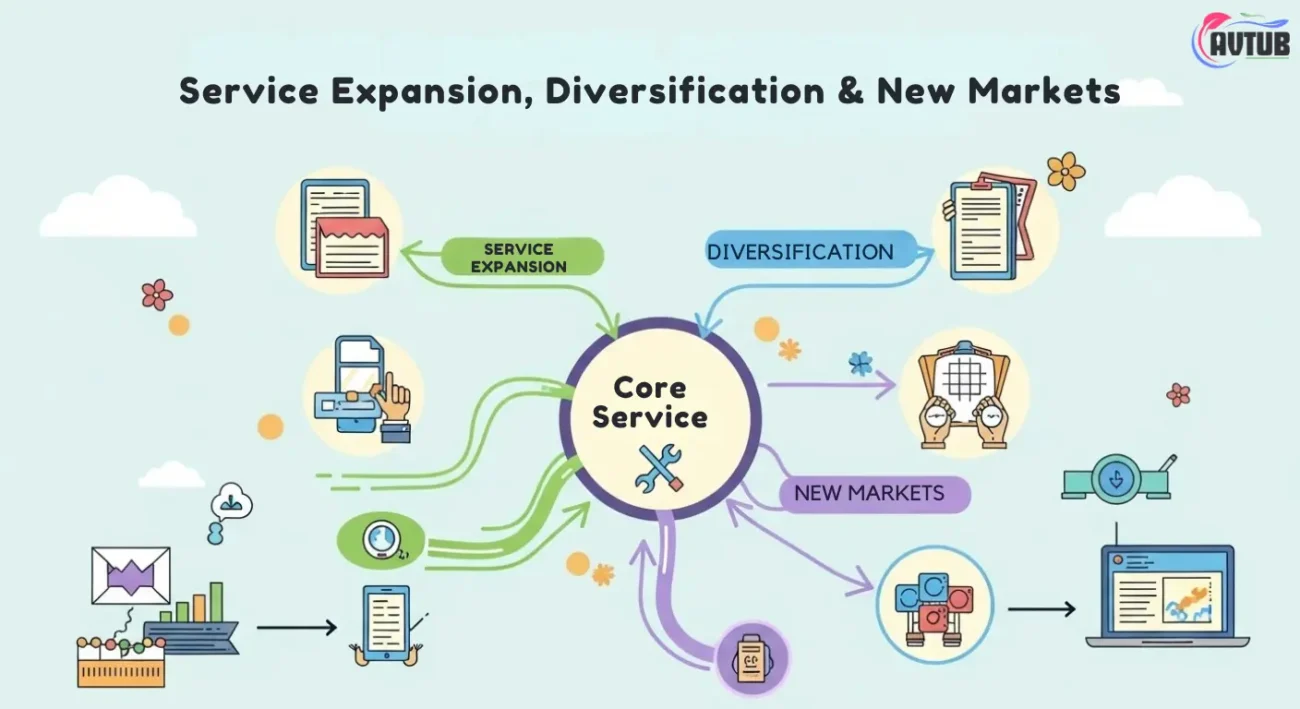It emphasizes a multi faceted approach centered on vigilant financial management and cash flow optimization. The playbook highlights the critical role of operational efficiency, achieved through process standardization, waste reduction, and strategic investment in technology and trained personnel. By prioritizing these core areas, businesses can boost productivity, improve profit margins, and secure sustainable, long-term expansion in a competitive market.
Get Your Foundation Strong: Know where you are
Understand your current business health:
- Calculate project profitability: not just total revenue, but which jobs made real profit after materials, labour, overhead, delays leveraging project management tools like Biddi.
- Assess your team, equipment and capacity: can you take on more work without burning out your crews or causing re work.
This step addresses a key weakness in many growth attempts: they chase more work without knowing whether current work is truly profitable. The LGA article stressed this: “Revenue increases that are not matched by profit gains.”
Set clear, measurable growth goals:
- Pick 2-3 concrete goals: e.g., “Increase average gross margin per job from 18 % to 22 % in 12 months”, or “Enter two new ZIP-codes this year with 10 % higher bid price”.
- Make them time-bound, trackable, and tied to actions.
If you don’t define growth, you’ll chase everything and end up doing many jobs and losing money.
Choose your niche or specialty:
- Analyse your past 12 jobs: which service line or market gave you the best margin or easiest execution.
- Pick one niche you’ll dominate e.g., “luxury bathroom remodels”, or “commercial roof replacements for insurance claims”.
- Then build your marketing, crew competency, and supplier relationships around that niche.
Focusing your niche lets you raise your bids, raise your reputation, and reduce competition.
Build the Team, Systems & Structure
Hire and empower the right people:
Growth means you’ll need more than just more hands on site you’ll need leaders and key operational roles.
- Identify which roles you must fill (estimating, project manager, scheduler).
- Hire people who are problem solvers, not just “task-doers”.
- Set clear KPIs (on-time completion, margin per job, client satisfaction) and empower the team to make decisions.
Create scalable systems and processes:
When you’re doing 3 jobs, you can wing it. When you’re doing 15, you can’t. The Archdesk article highlights technology as a pillar of growth.
- A project management platform where tasks, schedules, change orders live.
- Standardised quoting and job costing templates (so you know upfront margin, overhead, profit).
- A “growth checklist” for every job: from lead to close, to completion to follow-up.
Efficiency matters: wasted time, miscommunication and errors erode margins quickly.
Strengthen your cash flow and finances:
- Invoice timely and collect payment aggressively (and build relationships with reliable payers).
- Forecast cash flow monthly (know what’s coming, what’s due).
- Don’t take jobs just for cash only take ones where you can see the margin, risk and pay-back.
- Build a reserve for slow months growth often brings uneven cash flows.
Marketing, Branding & Client Experience
Build a strong brand, not just a reputation:
According to Buildertrend invest in your brand, not just relying on word-of-mouth.
- Define what makes your business different (the niche, quality, speed, sustainability).
- Clean up your website, show high-quality before-after photos, gather client testimonials.
- Use speaking engagements, local trade associations, and partnerships to boost presence.
Go beyond referrals do targeted marketing:
- Digital advertising (targeted to your niche + geography).
- Micro-content: short videos of jobs you’ve done; show your process, your team, your value.
- Partner marketing: e.g., local real-estate firms, insurance agencies, architects who send you clients.
- Loyalty campaigns: stay in touch with past clients for repeat or referral work.
Create a standout client experience:
Your marketing might get you a client but your experience and follow-up gets you referrals and premium pricing.
- Set clear expectations and communicate often (weekly updates, photos, site check-ins).
- Handle change-orders transparently clients hate surprises.
- After job completion follow up, ask for feedback, ask for referrals.
- Build a client database send holiday cards, maintenance offers, check-ins so you stay top of mind.
Service Expansion, Diversification & New Markets

Add adjacent services for higher value:
Here’s how to do it:
- Bundle services: “Full remodel + maintenance + warranty” which allows higher pricing and recurring revenue.
- Make sure the new service is aligned with your team skills and fits your brand.
Expand geographically or in market segment:
- Research nearby suburbs or ZIP codes with growth potential and less competition.
- Enter a new segment: e.g., commercial vs residential, insurance-work vs custom builds.
- Test small: do one pilot job in the new area or segment, evaluate, then scale.
- Adjust your messaging for each market: what the client values may differ.
Strategic partnerships and alliances:
- Partner with suppliers for preferred pricing (so you can improve margins).
- Partner with architects or designers for referral business.
- Join industry groups and associations for networking, learning and lead sharing.
- Consider co-bids on larger projects with other firms, so you scale without taking full risk.
Technology, Innovation & Future Ready Moves
Use the right tech:
- Project software that links estimating, scheduling, billing, change orders.
- Mobile apps on site so crews update status in real-time (reduces errors).
- Financial dashboards: know profitability by job, by crew, by project type.
- Data analytics: track which projects yield best margins, which clients cause delays, and adjust accordingly.
Embrace sustainability or smarter building as a differentiator:
BlueVine mentions green building practices as a competitive edge.
- Offer “eco-friendly builds”, recycled materials, energy-efficient systems clients are increasingly demanding this.
- Use this as part of your niche/brand.
- It also opens up possible premium pricing, and better client perception.
Prepare for future trends so you’re ahead, not catching up:
- Keep an eye on how emerging tech (drones, IoT sensors, AI) might reduce waste, delays and cost.
- Train your team early so when the tool becomes mainstream, you’re ready.
- When others are still resisting, early adopters often dominate in reputation and efficiency.
Risk, Quality, Margins Protecting What You Build
Only grow if you can keep quality high:
As LGA pointed out: growth that sacrifices quality is bad growth.
- Don’t say “yes” to every job. If you can’t control the schedule, margin, team, say no.
- Put a quality-review step into every job: before hand-over, check site, checklist, client review.
- Set a target “defect rate” or “change-order cost” and strive to reduce it.
Focus relentlessly on margins:
Profits are everything. Some jobs may look big but deliver small margins.
- At bidding stage, ask: “If this job goes 10% over scope, do we still hit profit target?”
- Track actual vs budget on each job. Review monthly. Learn from jobs that under-performed.
- Continuous improvement: crews, suppliers, methods small gains per job add up.
Manage risk and maintain your safety & compliance:
- Safety issues cost time, money, reputation. Invest in training.
- Make sure contracts are rock-solid (change-order mechanisms, payment terms, scope clarity).
- Insure adequately. A major accident or claim can stop growth in its tracks.
This protects your business so growth doesn’t derail into crisis.
Conclusion
Growing a construction business isn’t about chasing every project or buying more equipment it’s about building smarter, not just bigger. The Profit Playbook: Top Tips for Construction Business Growth gives you the roadmap: strengthen your foundation, empower your team, streamline your systems, and market with purpose. When you focus on profit before volume, quality before speed, and strategy before chance, growth becomes sustainable not stressful.


